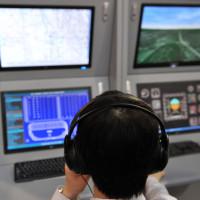Los Angeles Air Traffic Control Shut Down Due to Computer Failure

A U-2 spy plane flying over Los Angeles airspace last week confused the computers responsible for primary air traffic control in the region, requiring the system to be shut down.
The problem occurred because the U-2 flies under Visual Flight Rules at 60,000 feet, while most aircraft fly under Instrument Flight Rules above 18,000 feet. A computer confused by this situation attempted to re-route the U-2 down to 10,000 feet, which further required the re-routing of a number of other planes in the area. These calculations overtaxed the ability of the computer to function properly, and the system had to be shut down and rebooted.
During the shutdown, Southern California air traffic controllers were required to manually call their counterparts to update them on the flight plan for each plane under their purview, a procedure normally accomplished automatically by computers. Thankfully, no plane crashes are reported to have resulted from the incident.
Even when computers are working as they should, air traffic control is not foolproof. In an article reported in the Washington Post, a statement released by the Federal Aviation Administration (FAA) last September documented 4,394 errors by air traffic controllers between October 2012 and September 2013. 1,271 of those errors warranted thorough review by the FAA, which in the end categorized 41 of the mistakes as “high risk” and identified seven in particular that could have ended in catastrophe, according to the Post. In one of those incidents, a Boeing 737 and a Cessna came close to a collision at Bob Hope Airport in Burbank, California.
The number of these incidents is much higher than similar data previously reported . While the FAA claimed the increase was due to better reporting and data collection methods, the U.S. Department of Transportation’s Inspector General directly challenged that assertion and went on record that the increase in reported errors was due at least in part to an increase in actual errors among air traffic controllers.


 Close Menu
Close Menu